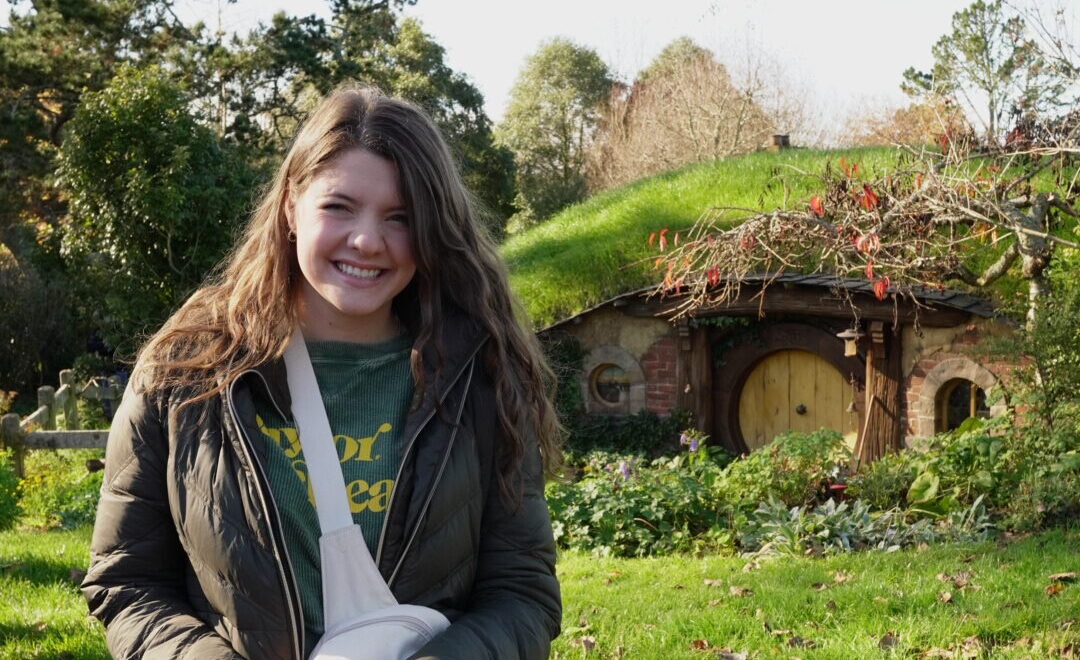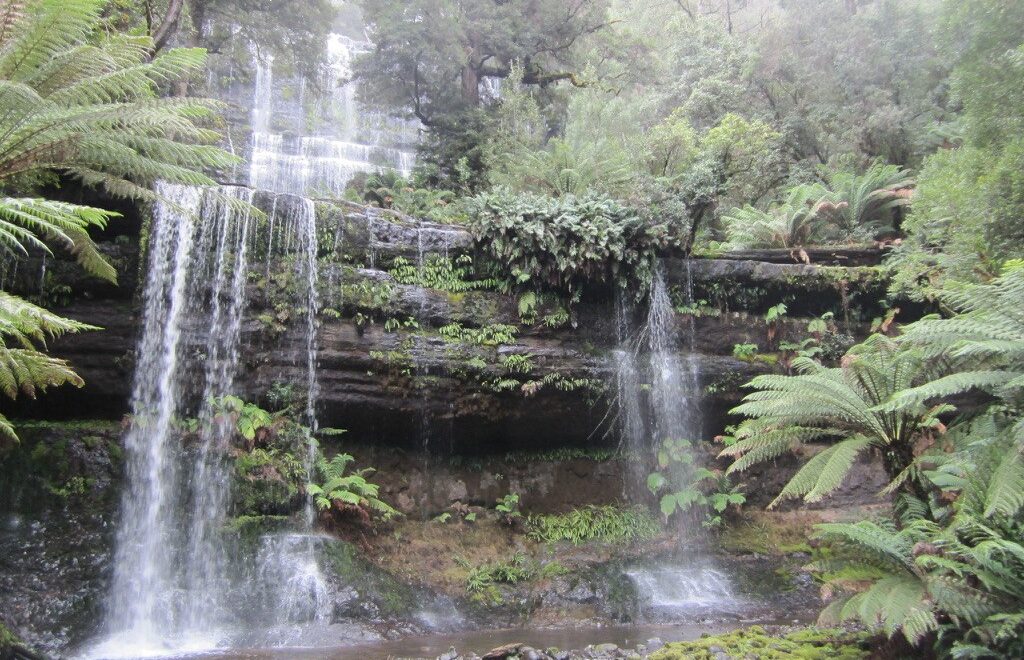
Madeline tells the story of her study abroad experience in Aotearoa New Zealand. She writes:
The first words I heard when stepping off of the 17 hour flight to Wellington, New Zealand were “Kia Ora”. This a greeting from the Māori culture, one that is native to this pacific island. While the literal translation of this phrase is to ‘have health’, this phrase has transformed to mean everything from “thank you” to “good morning” to “see you soon”. More importantly, this phrase came to categorize my two week study abroad in New Zealand’s northern island.
During the spring of my sophomore year, I had the absolute honor of attending the AUIP’s study abroad program in New Zealand’s North Island. Our trip began in Wellington, a port city on the southern edge of the island. Our time in this city was spent educating ourselves on Māori culture. One of my favorite memories was when we had the opportunity to eat Hāngī, a traditional method of food preparation. We were also able to attend Te Papa Tongarewa, New Zealand’s national museum. One of my favorite exhibits detailed ancient Māori sailing and navigating practices. And, as a total art history nerd, I was delighted to see Tuffery’s statue, Pisupo Lua Afe, in person.
Additionally, we were able to visit Zealandia, a nature reserve in the heart of Wellington that aims to restore its property to what New Zealand’s flora would have looked like before the arrival of settlers. All of these experiences gave us a strong foundational knowledge of Māori culture and customs, as well as New Zealand’s history. I was so impressed by how modern Māori culture had blended with New Zealand’s strong western influences. This country is a prime example of ways that indigenous culture can be revered and carried into our current day.

Madeline exploring the native forest on Rangitoto Island
After Wellington, we made our way into the center of the North Island, to the small city of Rotorua. This region of New Zealand is known for its incredible displays of geothermal activity. Because of this, the entire city had the faint smell of sulfur, which was a small price to pay for the incredible nature scenes we experienced. My favorite part was when we attended a local primary school, which prides itself on teaching a dual Māori curriculum. Not only do their children display a strong love and understanding of culture and national identity, but they also have a dynamic work-life balance. As an Apple Technology certified school, the instructors have found creative ways to implement technology into the classroom. Every student has their own iPad, which they are able to use for both education and entertainment. Many of them use their devices to further their education in their free time. Some classrooms have even implemented VR into their lessons. The children I spoke with had a strong desire to learn and grow. They also have a beautiful connection to their heritage and were incredibly globally minded for their age. This school trip was a textbook example of using institutionalized education to inspire a deep love of learning within students.

Madeline at Frying Pan Lake in Rotorua
The last stop on our journey was to the northernmost city of Auckland. In addition to hiking and enjoying the city, we also attended an intermediate (or middle) school that specializes in providing care and instruction for children who experience special needs. One thing I found incredibly impressive were how many different experiences this school offers its students. Their campus is filled with endless indoor and outdoor spaces that each serve a different purpose. For example, children have the opportunity to decide between a large outdoor playscape or a small, intimate room for studying. The choices these children are given foster autonomy within their curriculum. It was also so incredibly refreshing to talk with teachers who adore their job. I loved hearing their initiatives to provide their students with a dynamic, in-depth education that focuses on fostering creativity and independence.
This study abroad program was an unforgettable experience for so many reasons. Not only were we able to gain first hand experience learning about globally minded curriculums, but we were also able to learn how a country can revere its indigenous cultures. Both of these topics feel incredibly relevant in our current day. They also worked to further my studies and give the theories I am learning within the classroom a real-world application.









